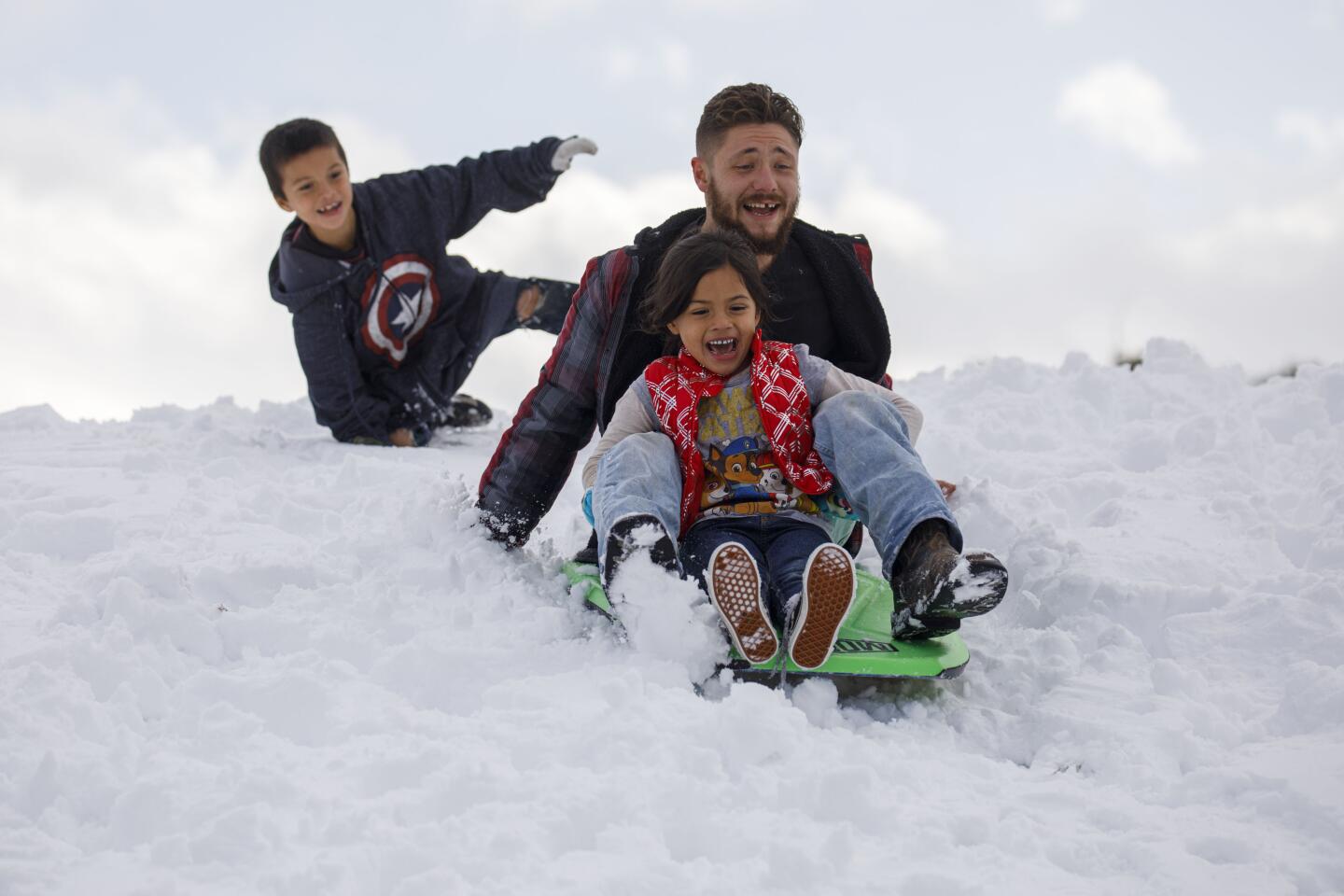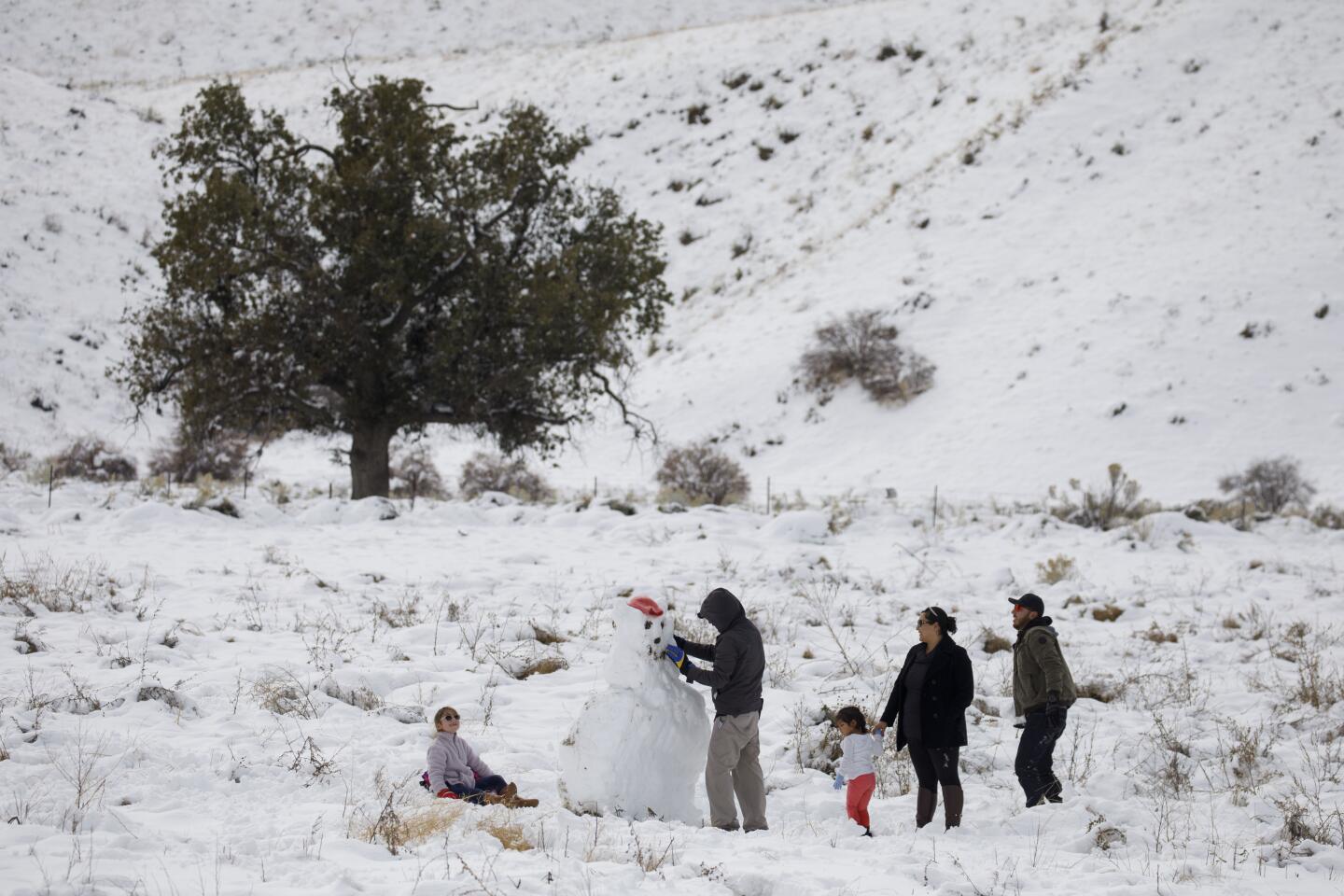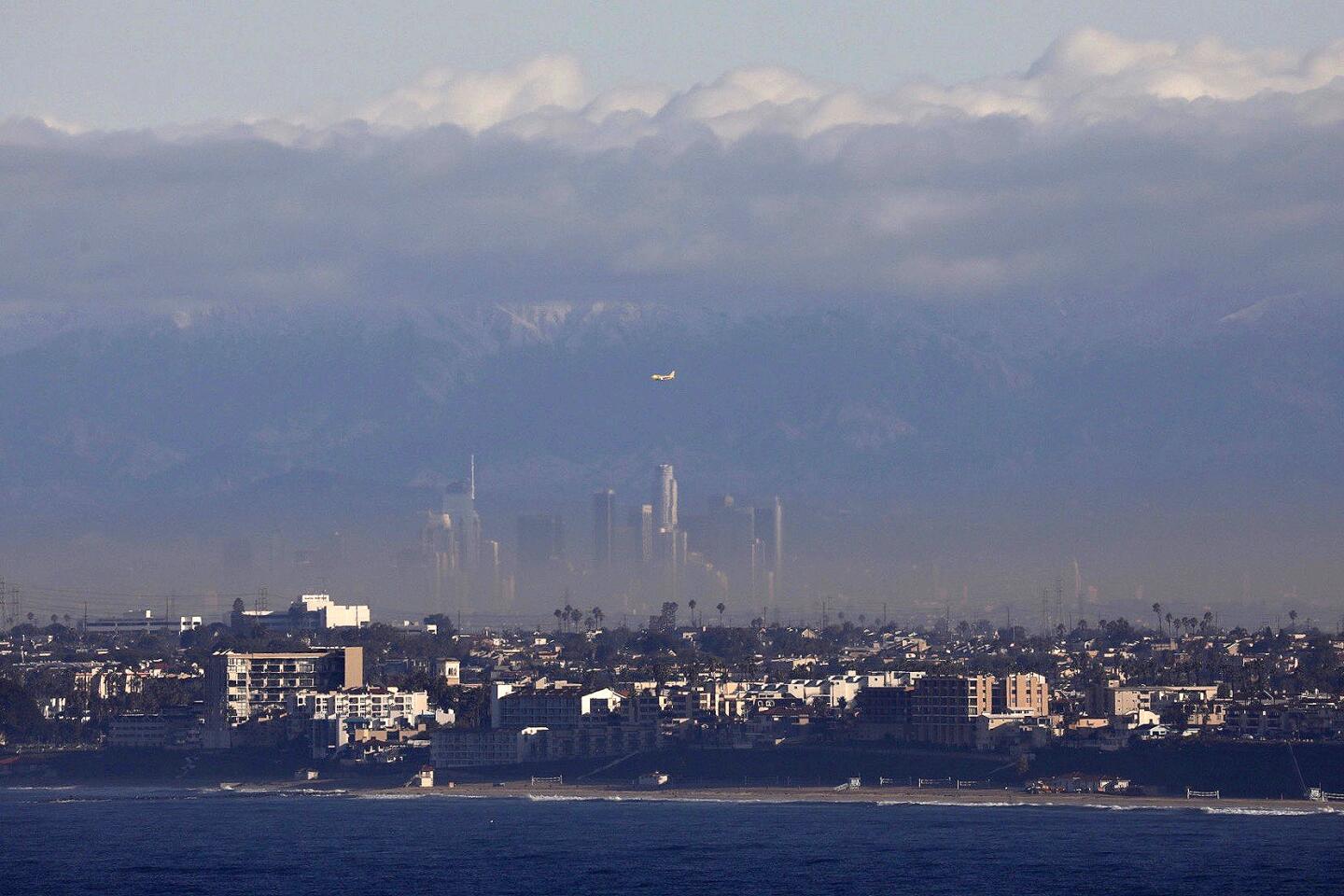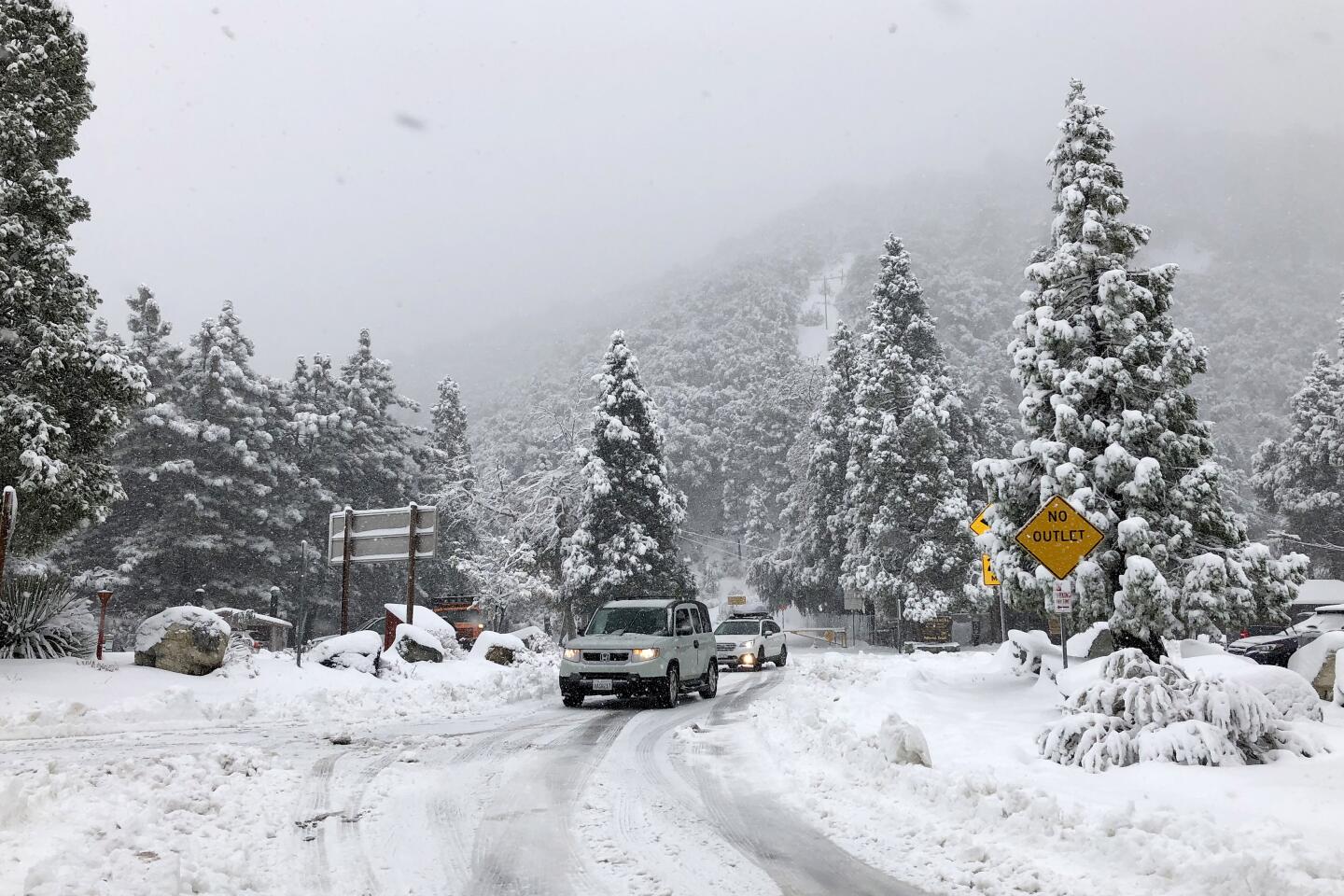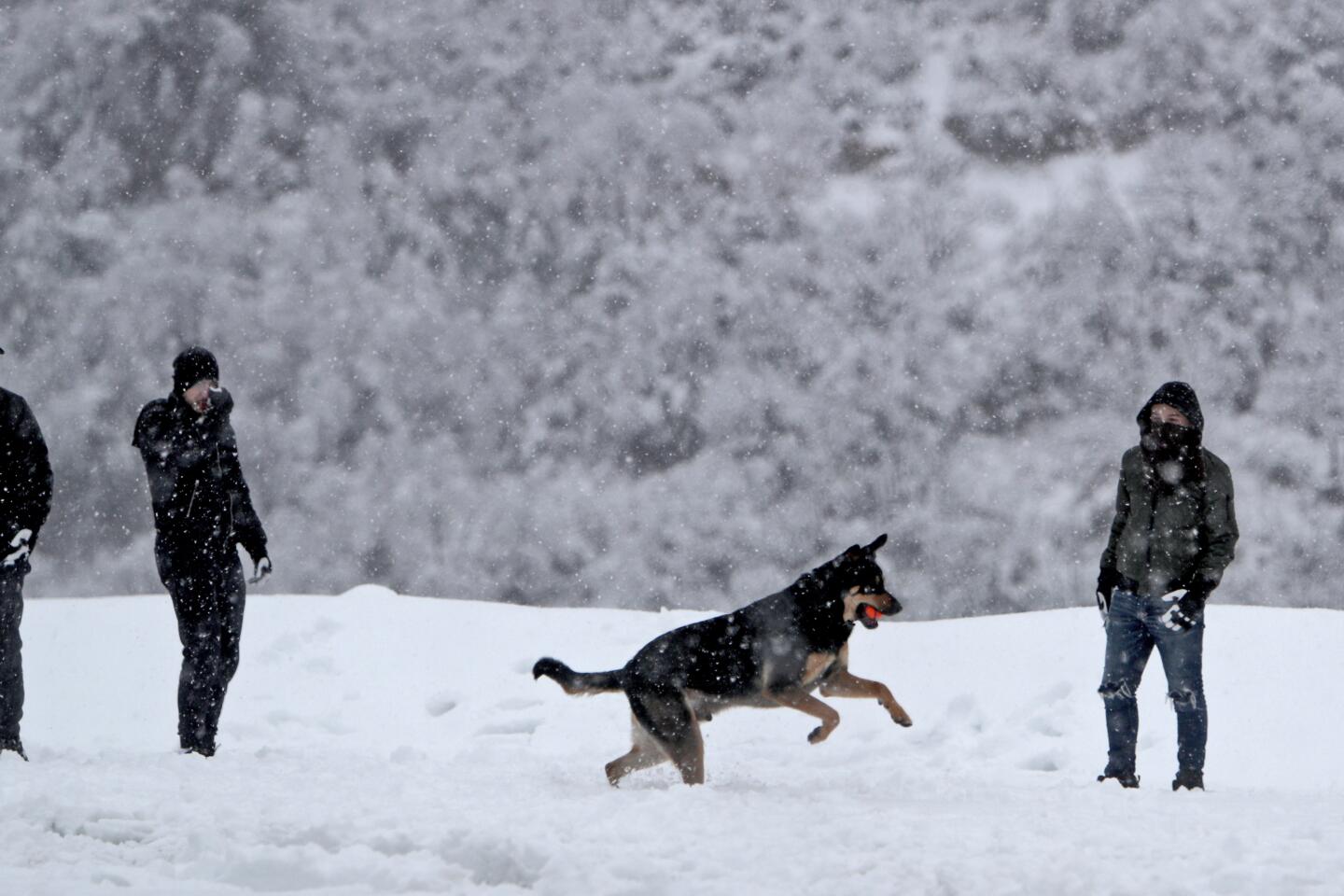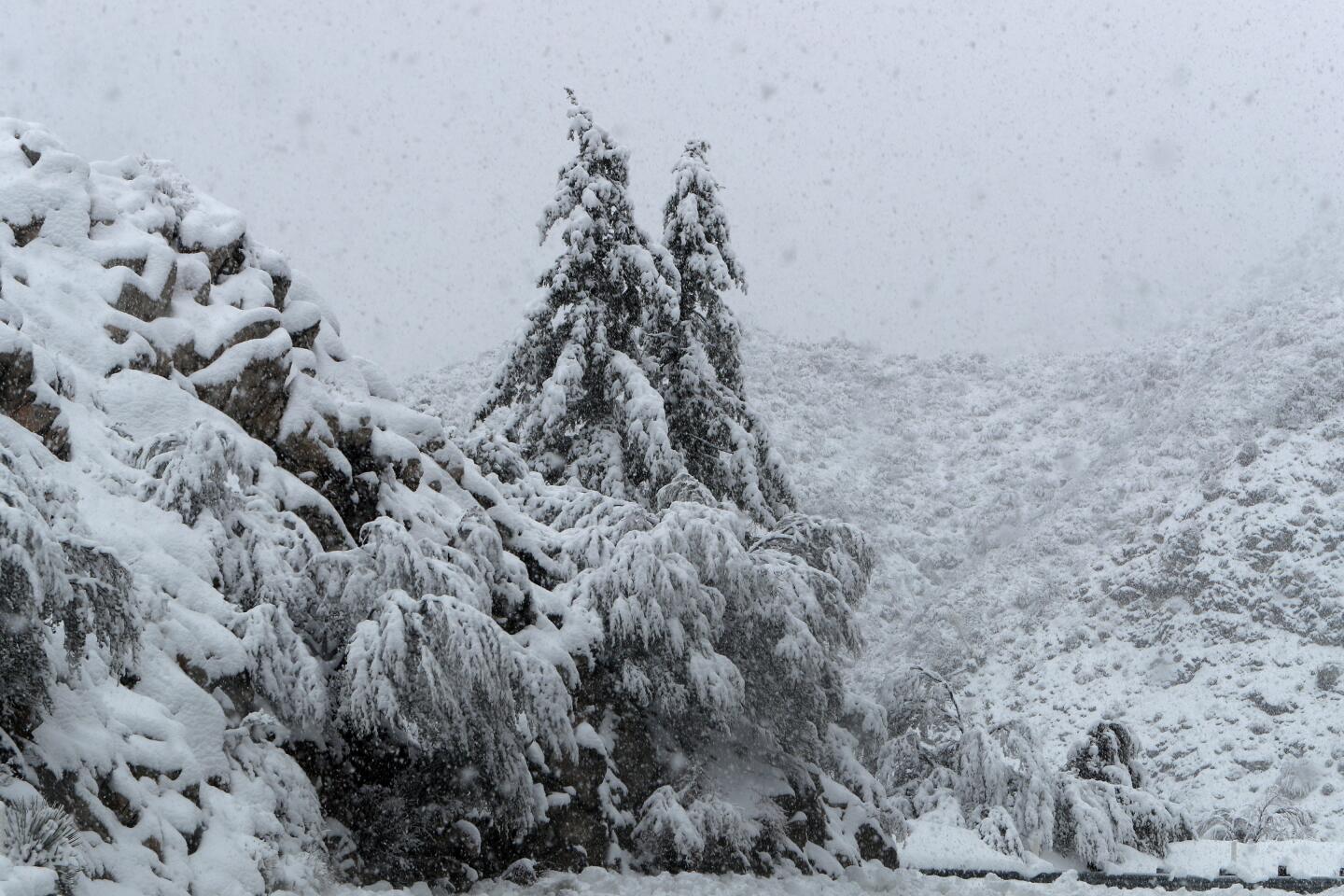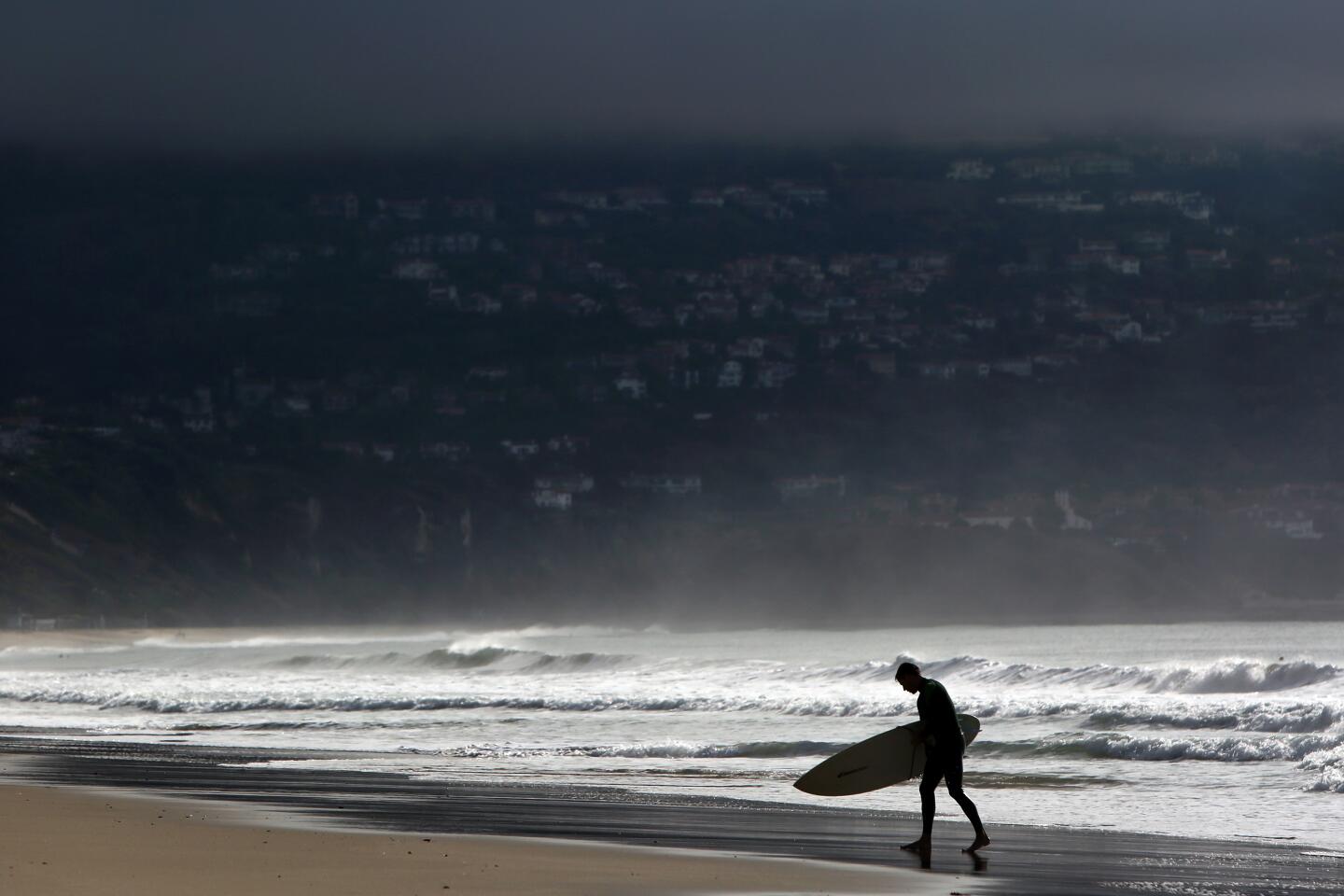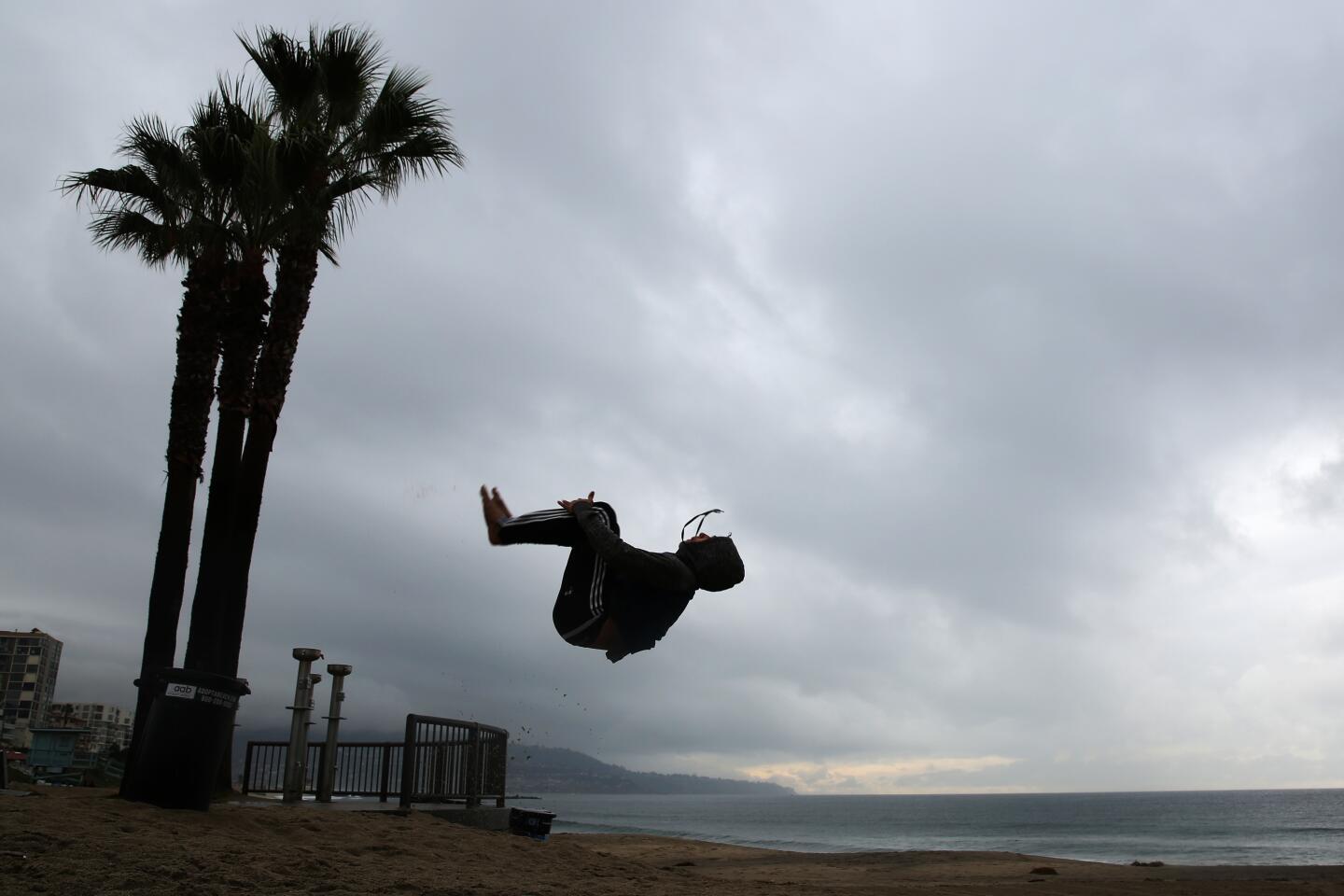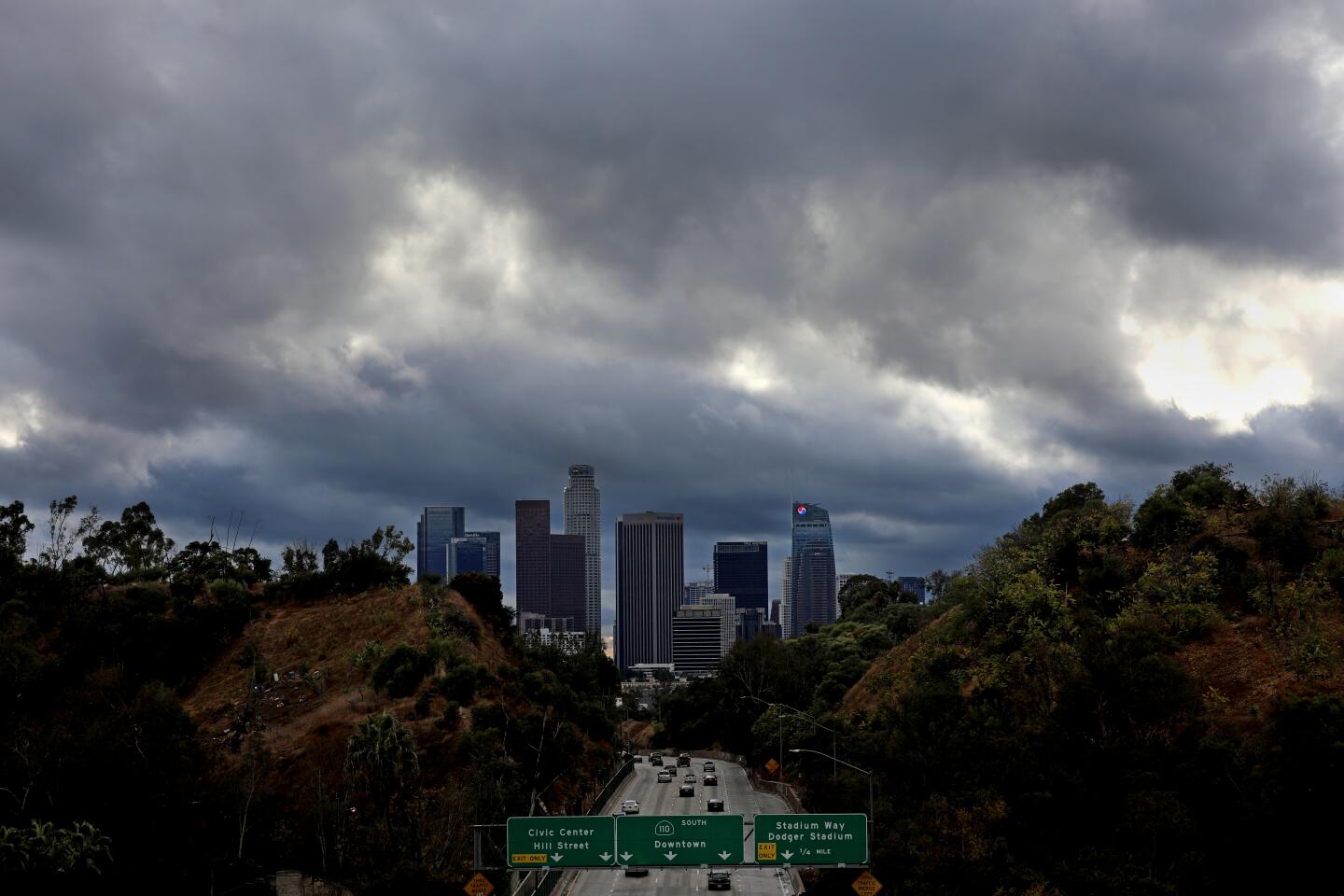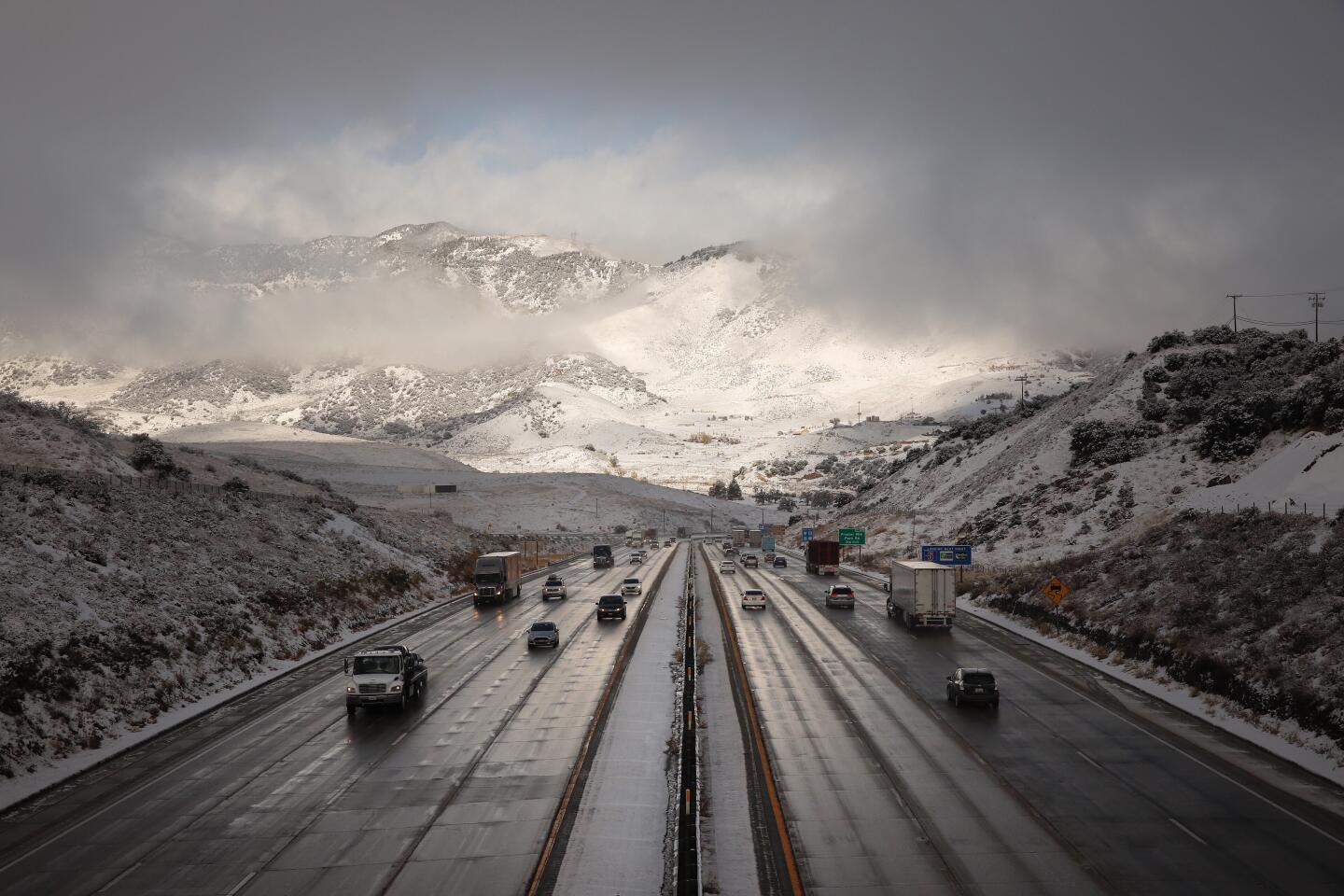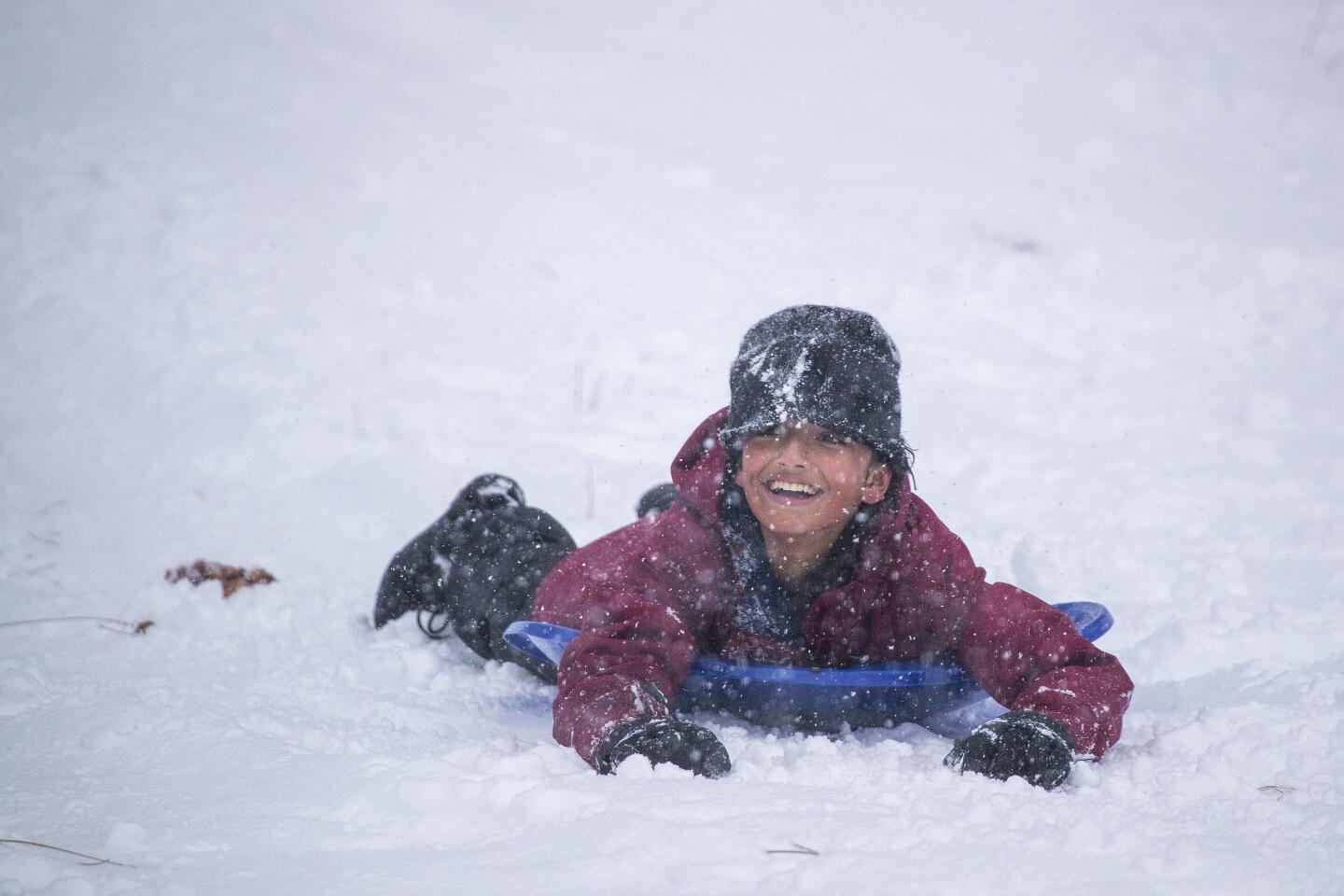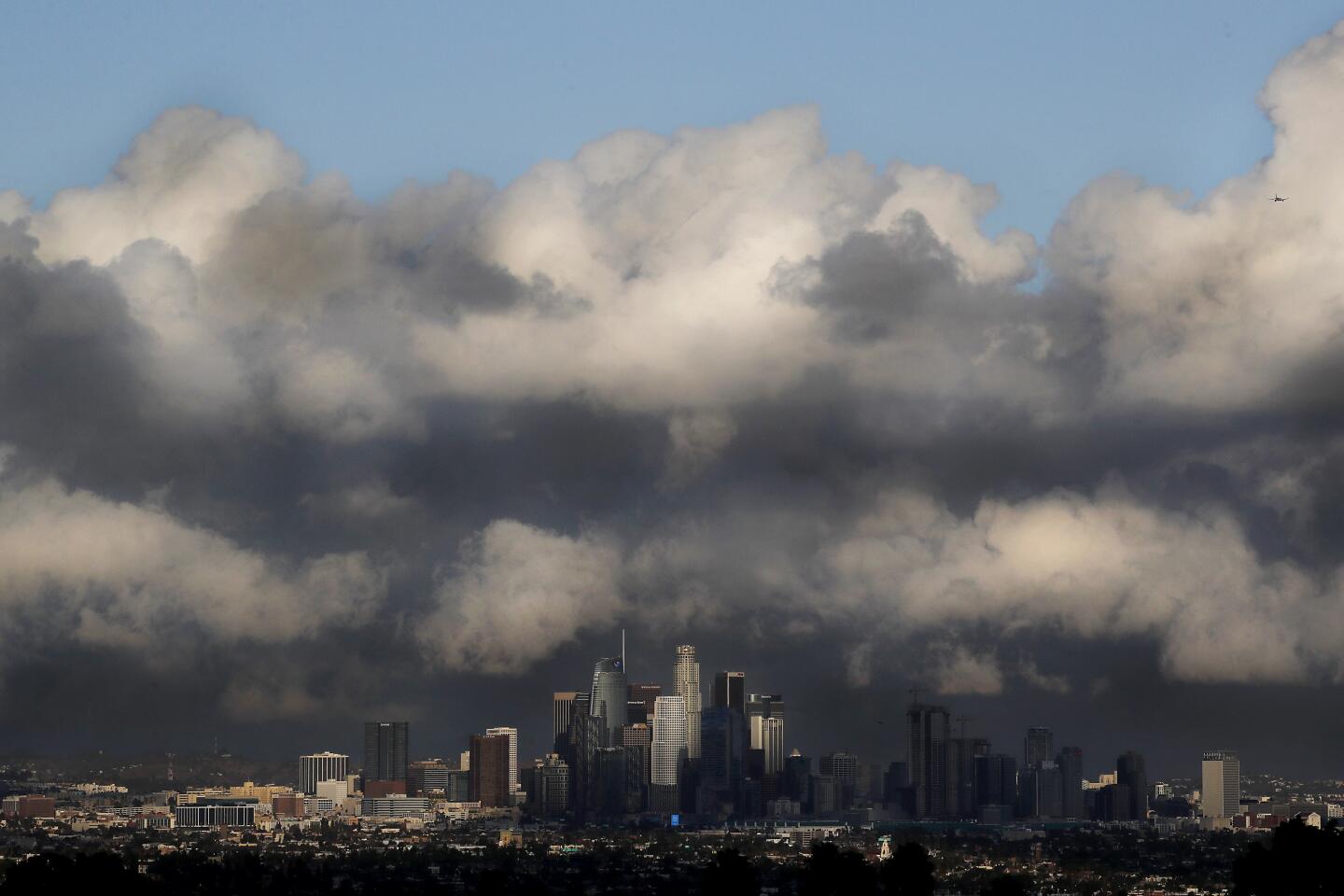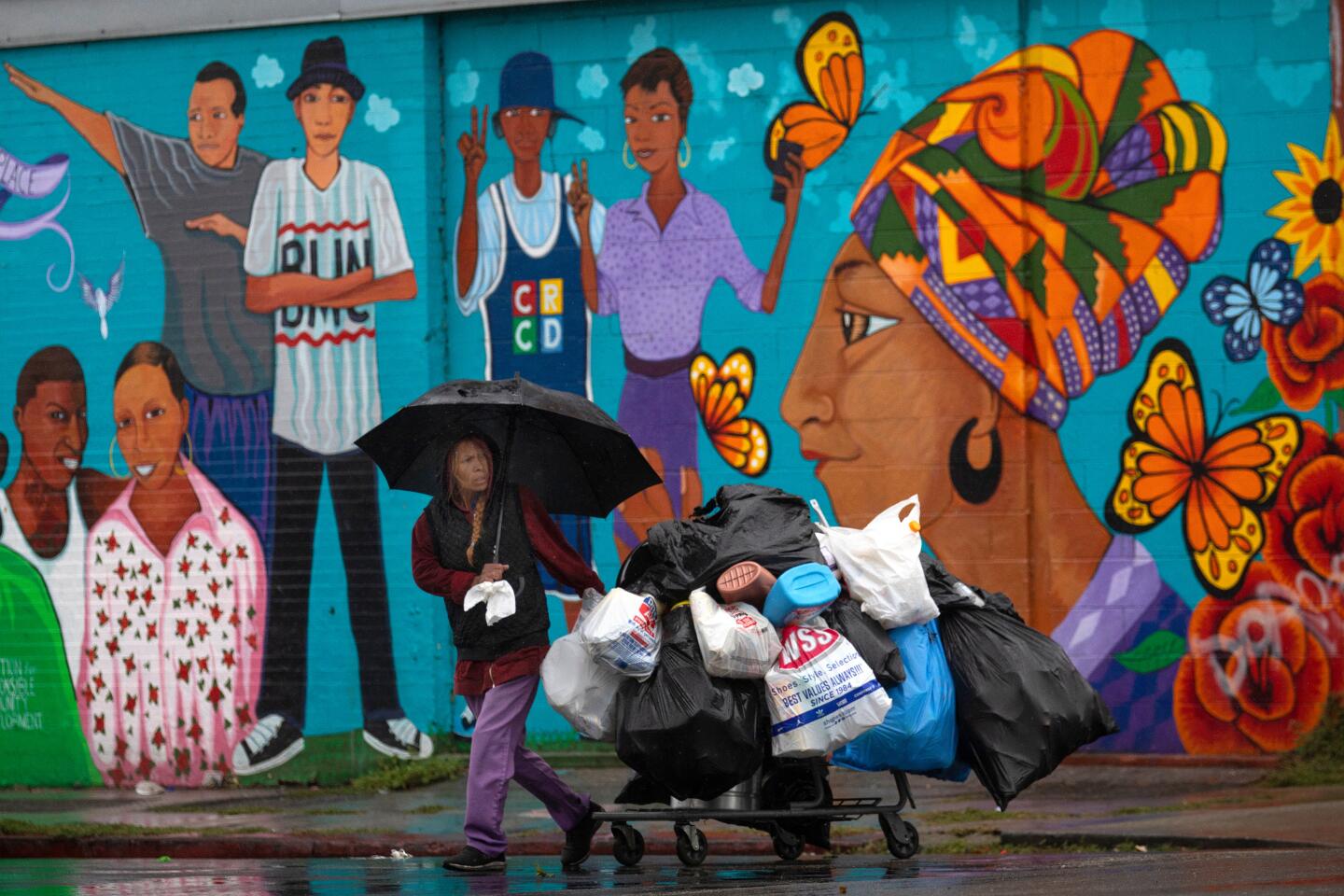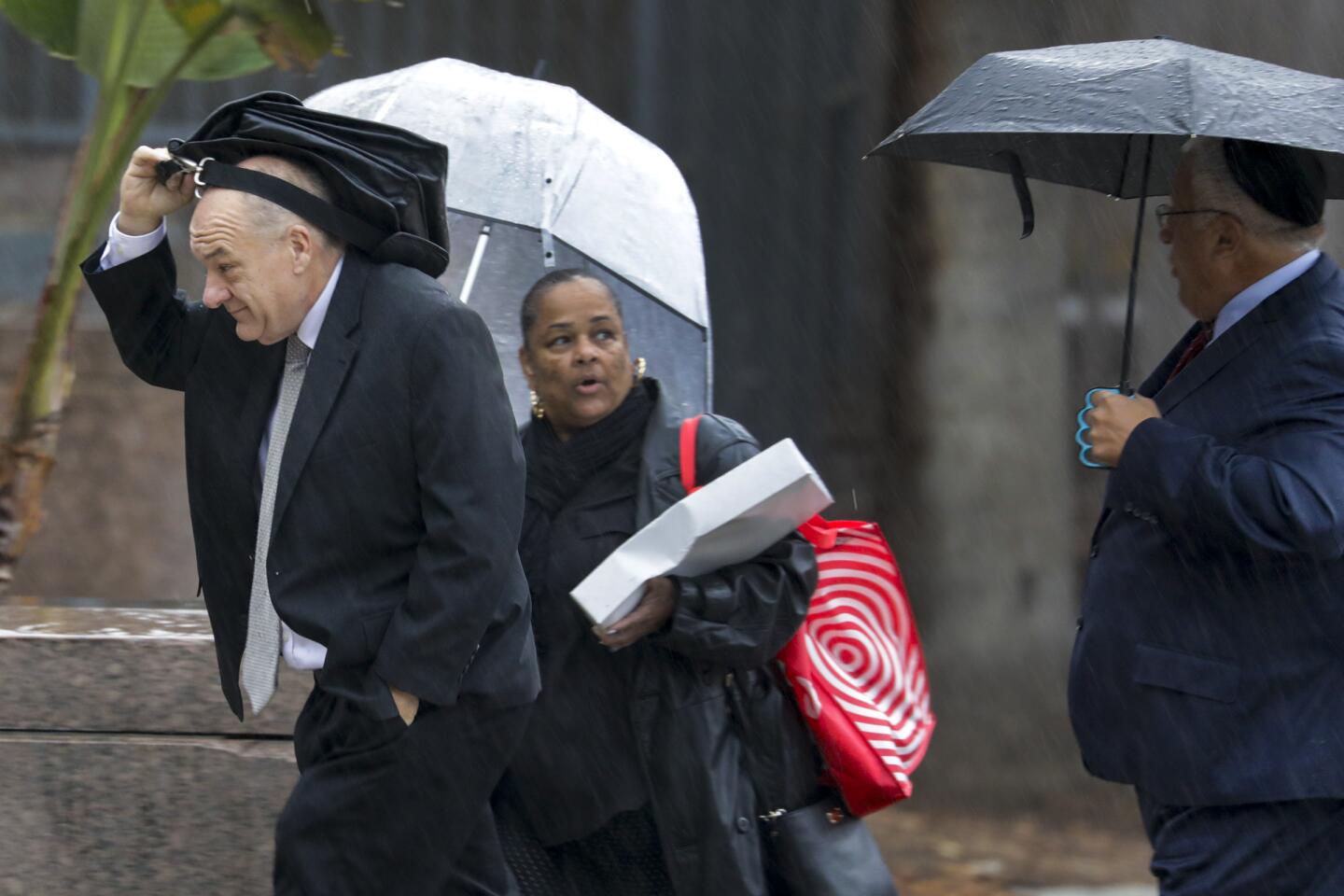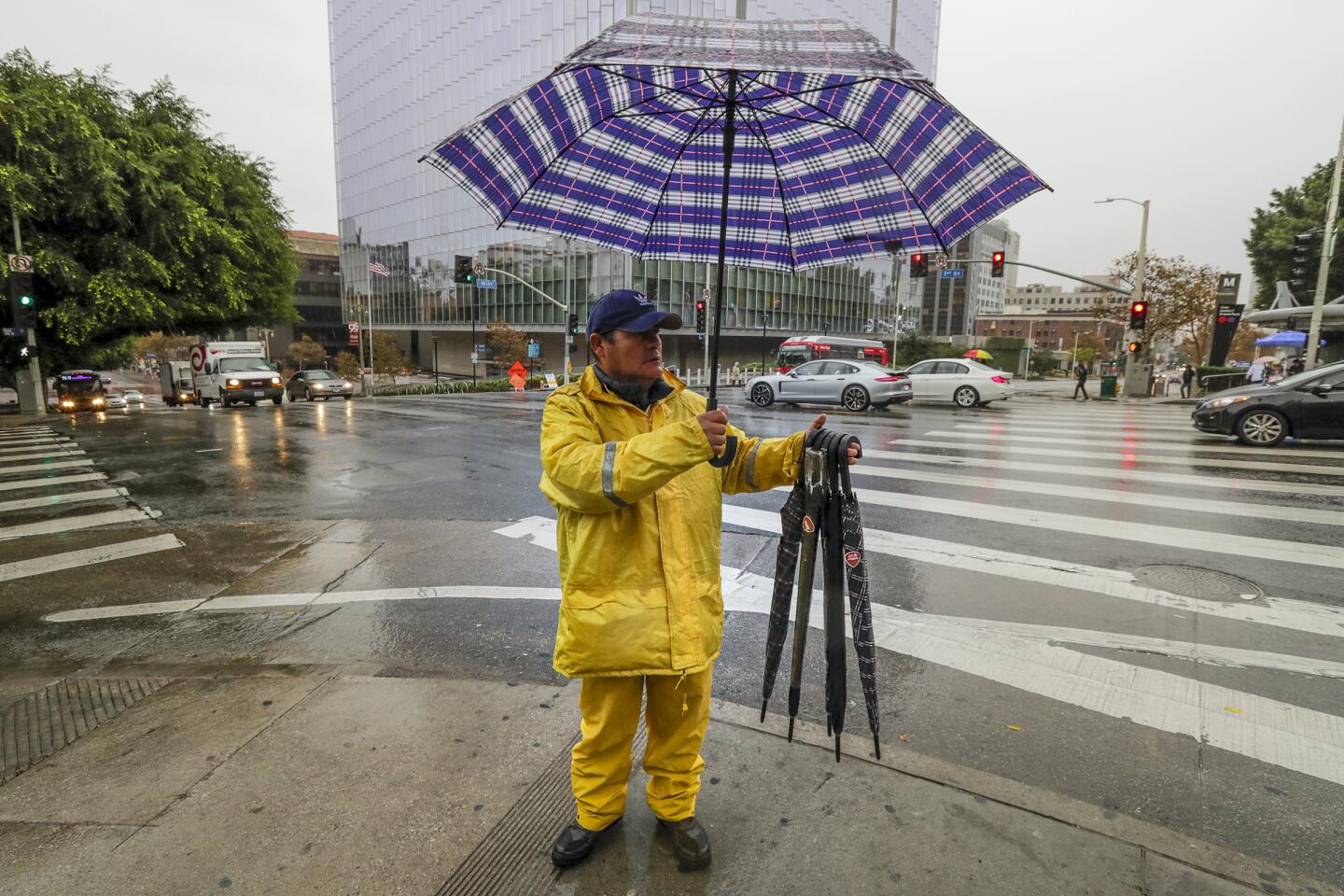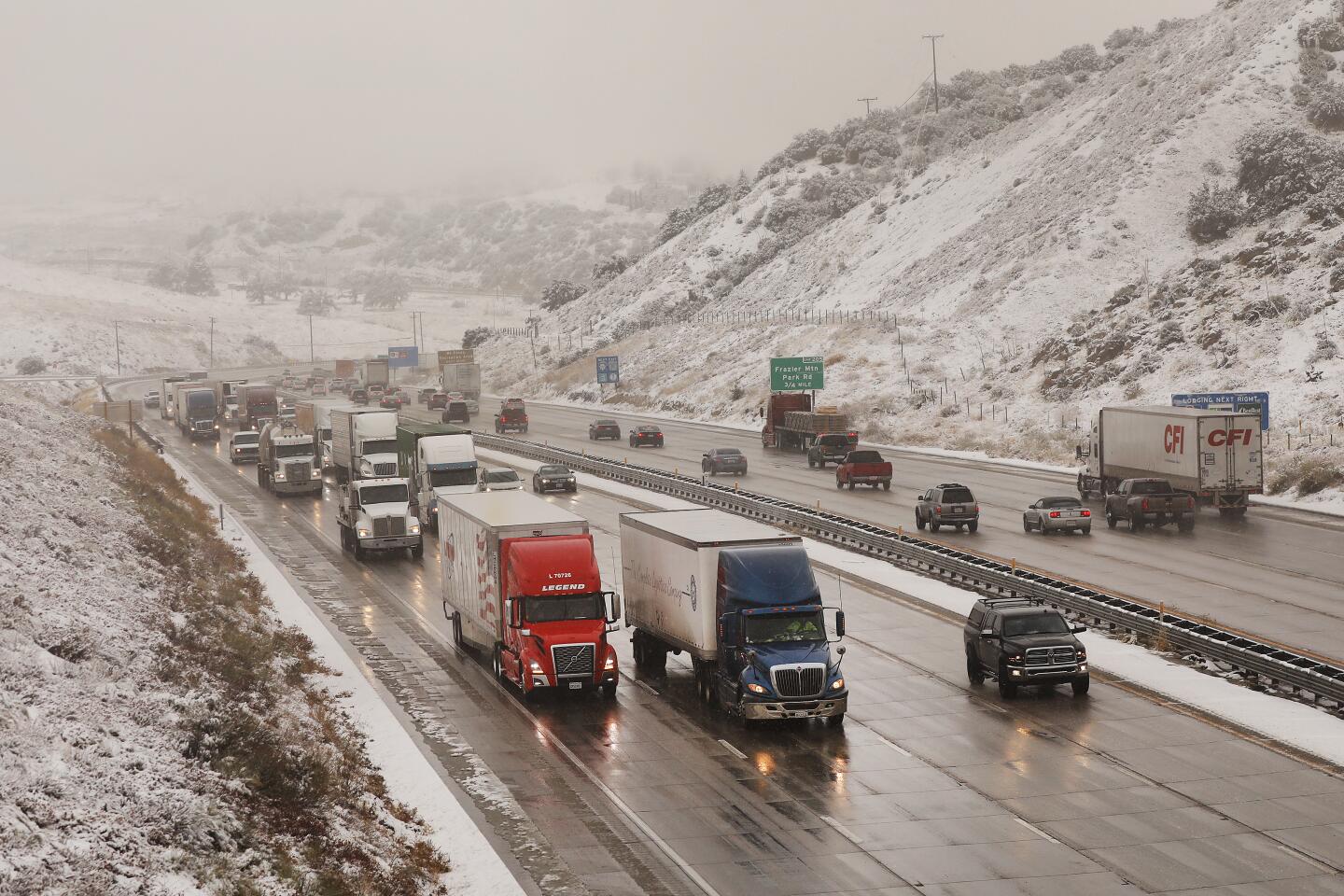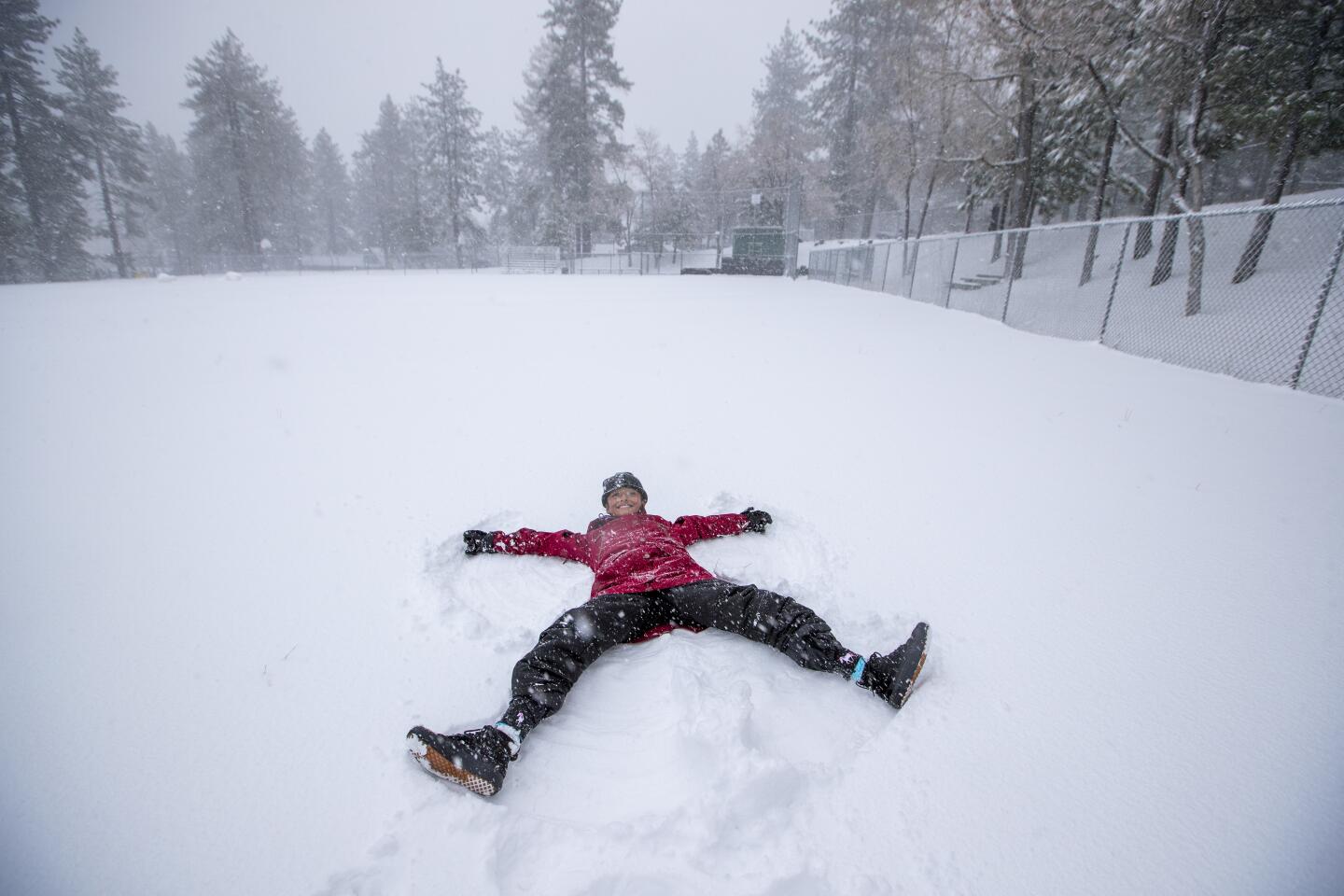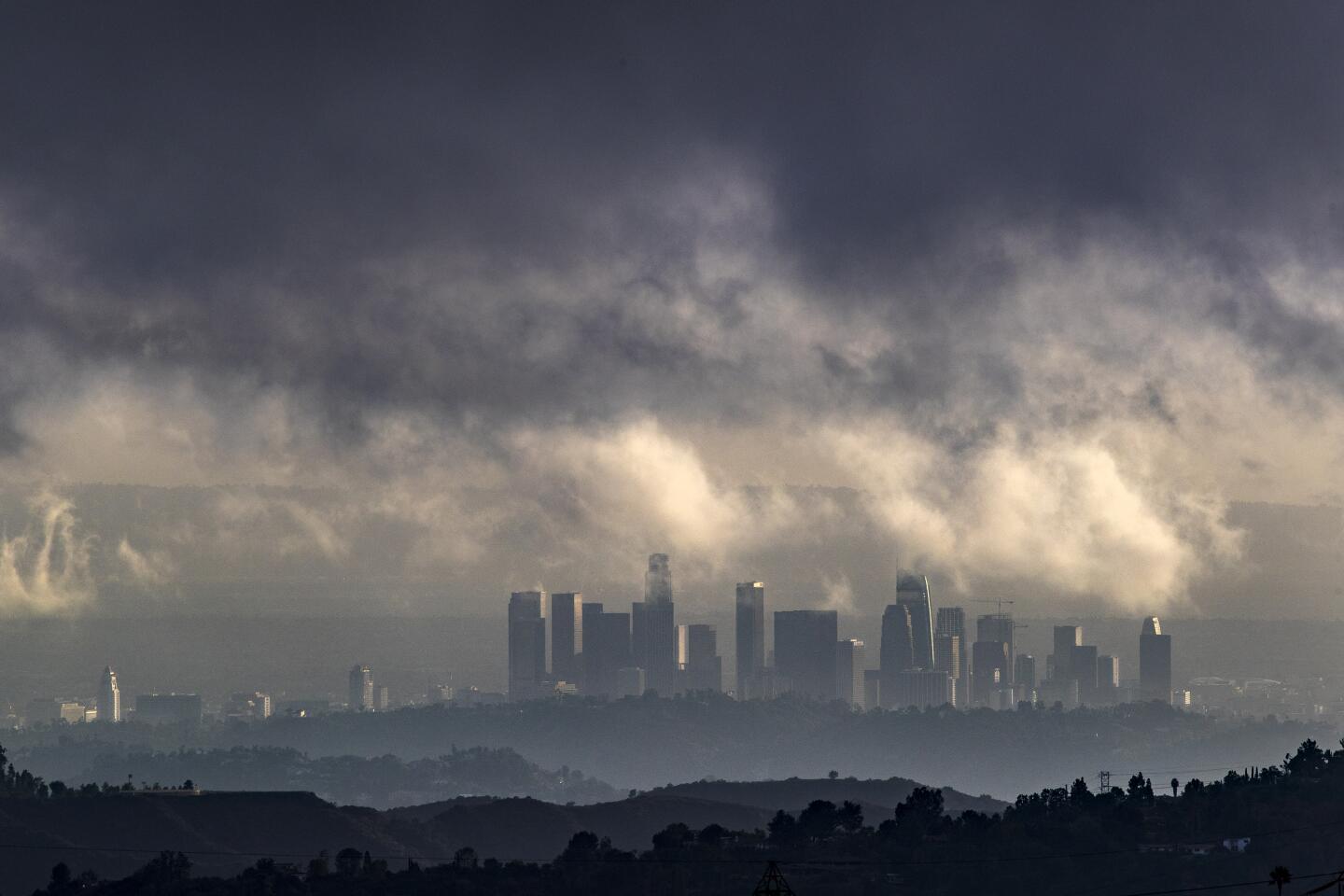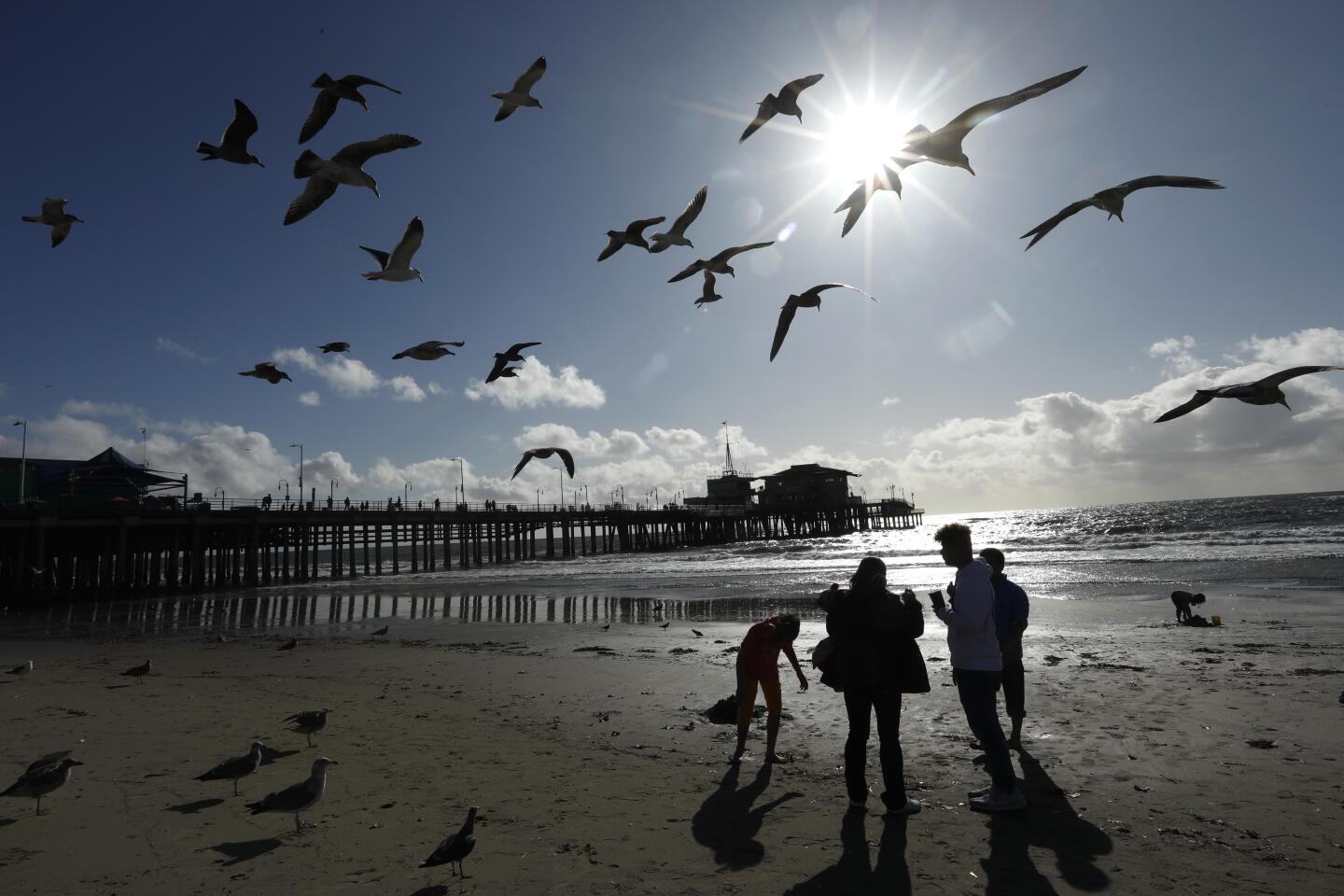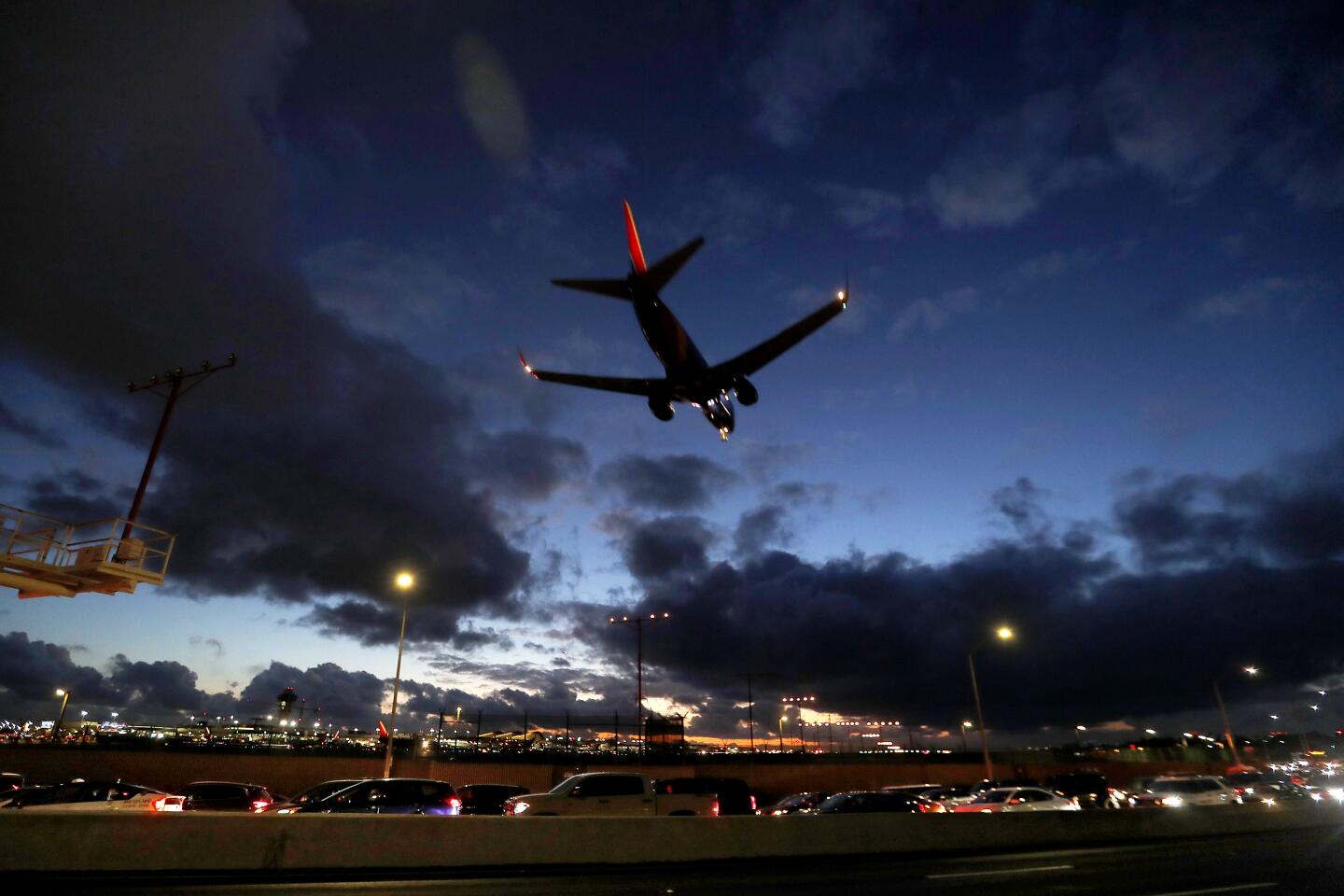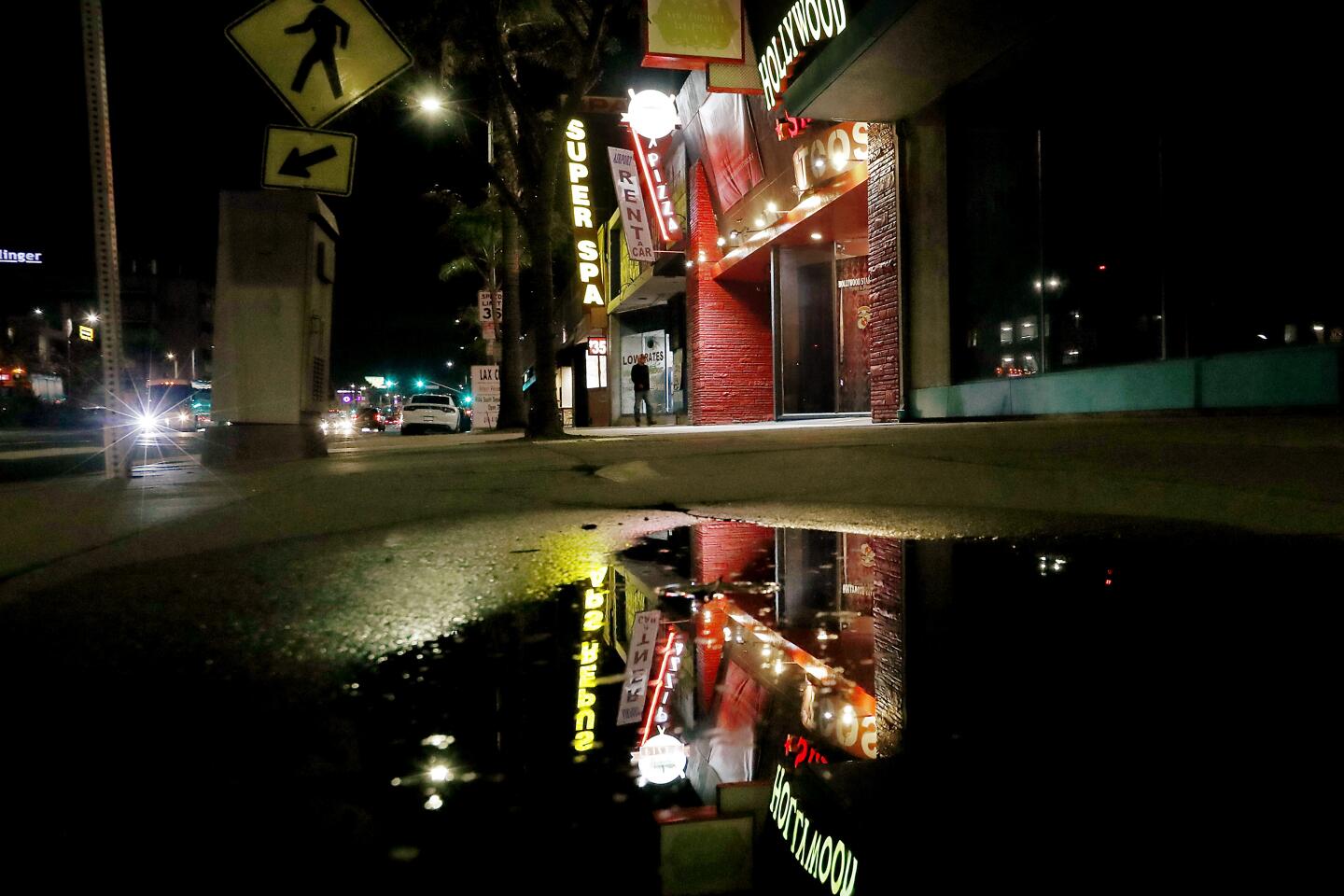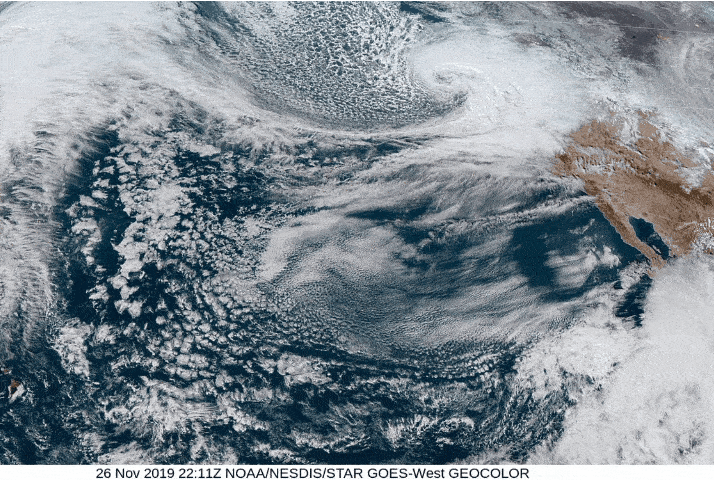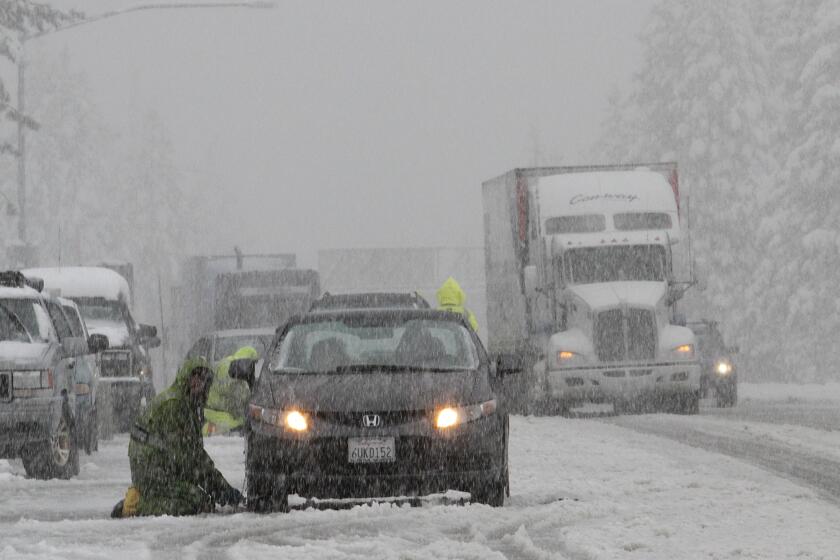Round one of Thanksgiving storms dumps record rain in California; round two coming Thursday
- Share via
A chilly storm unleashed heavy rain and blustery winds Wednesday and dusted mountain ranges across California with snow, prompting flight diversions and road closures and snarling traffic across the Golden State leading up to the Thanksgiving holiday.
The downpours were not always long-lasting, but they could be intense. Record rainfall for the day was reported in a few spots including Santa Barbara Airport, Santa Maria and Lancaster, which had 0.43 of an inch. The main band of the first storm moved out Wednesday, but another storm is moving in Thursday.
A cold front originating in the Gulf of Alaska arrived in portions of Northern California on Tuesday and immediately began causing headaches for motorists along mountain passes inundated by flurries of snow. The rain dampened the Cave fire in Santa Barbara County and allowed firefighters to get a handle on the blaze.
About four hours later, the bulk of the precipitation for the day appeared to be winding down in that region as the storm made its way south. In Los Angeles County, motorists had a wet drive under cloudy skies as the beginning of rain from the storm fell during the morning rush hour. The rain was expected to taper off in the afternoon, said Andrew Rorke, a senior forecaster with the National Weather Service in Oxnard.
“The real impacts will be tomorrow,” he said.
In other words, don’t stow your umbrellas and raincoats quite yet. A second wave of the storm is expected to bring more intense rain and snow across the state. In all, 1 to 2 inches of rain are expected in coastal and valley areas, with up to 3 inches in the foothills and at lower elevations in the mountains, Rorke said.
Up and down California, ski resorts were celebrating the long-term benefits of the white Thanksgiving of 2019, though high winds and blizzard conditions caused some logistical problems.
While the rain was sporadic Wednesday, showers caused their share of issues across the Southland.
At least one flight from Southwest Airlines with 116 passengers was diverted from Hollywood Burbank Airport to Ontario International Airport because of heavy rain, a spokesperson for the airline said.
“As the largest carrier of air travelers in the L.A. Basin, no doubt that the weather has affected many of our flights,” Southwest Airlines officials said in an email. “Our preeminent concern is safety.”
The word ‘bombogenesis’ has been used to describe a rapidly deepening low-pressure system approaching Southern California, creating what is known as a ‘bomb cyclone’
In Atwater Village, helicopters swarmed overhead as firefighters rescued a man stuck in a thicket of trees in a swollen portion of the Los Angeles River. The man was stranded about 40 feet from shore while fast-moving water surged past him. Los Angeles Fire Department rescuers spotted the man about half a mile from the Colorado Boulevard exit on the 5 Freeway around 10 a.m., according to the LAFD.
Traffic along that stretch slowed to a crawl as drivers watched the unfolding rescue. A portion of the right lane was closed off by authorities. One rescuer boarded a black inflatable boat, maneuvering through rushing water and heavy rain to reach the unidentified man, who was holding on to a tree.
The rescuer initially tried to save the man alone but had to return to shore to get a second crew member to help, aerial footage showed. On the second attempt, one firefighter swam to the victim and was able to get him safely into the raft.
Frigid polar air from the storm has also dramatically dropped temperatures, which are lingering about 15 degrees below normal for this time of year in Southern California. High temperatures Wednesday and Thursday will be in the mid-50s in Los Angeles. Typically, the region sees temperatures in the low 70s the week of Thanksgiving.
“You have to pity people flying in from places like Massachusetts who are trying to escape the snow coming to L.A. and getting 55-degree temperatures,” Rorke said.
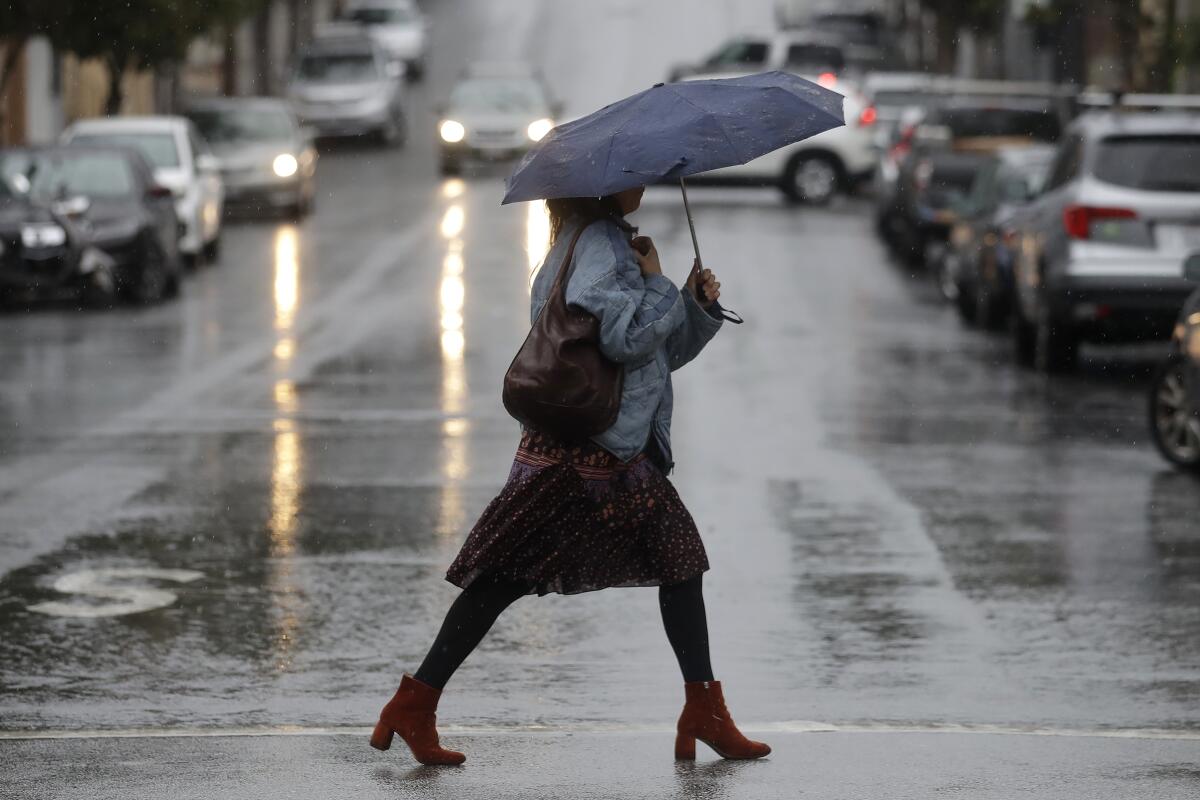
The storm is also expected to drop snow levels to 2,000 feet, bringing travel challenges for people commuting before and during Thanksgiving.
By 6 a.m. Wednesday, flurries had begun to fall along the Grapevine section of the 5 Freeway. Light snow is expected to continue in the area throughout the day, but forecasters say Thursday’s conditions will deteriorate as snow levels continue to drop. The storm is expected to dump up to 6 inches of snow along the Grapevine, with the bulk of it falling Thursday, Rorke said.
Some of the worst traffic from the storm in California was punishing Interstate 5 between Redding and the Oregon border. By midafternoon Tuesday, multiple vehicle spinouts and heavy snow forced the California Department of Transportation to close the northbound freeway north of Redding.
“TRAVEL NOT ADVISED in Shasta, Siskiyou, Trinity and Modoc Counties,” Caltrans tweeted. “There is nothing we can say at this point other than our Maintenance forces continue working non-stop as we speak.”
With snow on the way, tire chain tips for California drivers on the move over the holiday.
The California Highway Patrol tweeted that progress clearing Interstate 5 was slow because vehicles were blocking the roadway. Photos showed inches of snow on the roofs of cars stopped on the freeway, as motorists stood beside their stranded vehicles.
One Berkeley motorist told KNTV-TV that she left the Bay Area on Tuesday around 4:30 p.m. but had been stuck in bumper-to-bumper traffic for more than 10 hours as she sought to get to Mount Shasta about 250 miles away.
“What they said last was that they were trying to open it, and every time they opened it, someone got into an accident,” Danielle Altizio told the station. “Right now there’s between 15 and 22 individual accidents or spinoffs ahead of us, and so they have to not only clear the highway, but clear those accidents.”
More to Read
Sign up for Essential California
The most important California stories and recommendations in your inbox every morning.
You may occasionally receive promotional content from the Los Angeles Times.
